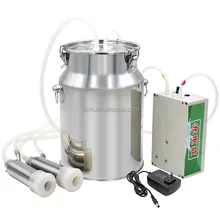A Unique Design for Innovative Chicken Coops to Enhance Poultry Farming
Dec . 13, 2024 19:23 Back to list
A Unique Design for Innovative Chicken Coops to Enhance Poultry Farming
The Evolution and Importance of Chicken Cages in Poultry Farming
In the world of poultry farming, the type of chicken cage utilized can significantly impact both the health of the chickens and the efficiency of the farming operation. Over the years, the evolution of chicken cages has brought about numerous innovations that cater to the needs of both the birds and the farmers. This article will explore the various types of chicken cages, their configurations, and the implications of these designs for animal welfare and productivity.
1. Traditional Battery Cages A Historical Perspective
Historically, battery cages became the standard in egg production due to their efficiency in space utilization. These cages are small, often housing several hens in a confined area. While they maximize output by allowing farmers to keep a large number of birds in a limited space, they have come under scrutiny for their impact on animal welfare. The lack of space inhibits natural behaviors such as nesting, foraging, and movement. As a result, many countries have implemented regulations to phase out traditional battery cages in favor of more humane alternatives.
2. Enriched Cages A Compromise
In response to growing concerns about animal welfare, enriched cages were developed as a compromise. These cages are larger than traditional battery cages and include features such as nesting boxes, perches, and scratching areas. The intention behind enriched cages is to provide hens with some opportunities to engage in natural behaviors while still allowing farmers to maintain a level of efficiency in production. Enriched cages have gained popularity in several regions, though they still face criticism from animal rights activists who argue they do not fully meet the needs of the chickens.
3. Free Range and Pasture-Based Systems
As consumer demand for ethically produced eggs has risen, many poultry farmers have shifted towards free-range and pasture-based systems. In these setups, chickens are provided with access to the outdoors, allowing them to engage in behaviors such as pecking, scratching, and foraging in a natural environment. This type of housing is often seen as the most humane option; however, it requires significantly more space and can lead to higher production costs for farmers. Additionally, free-range systems pose challenges in terms of predator control and disease management.
a type chicken cage

4. Cage-Free Systems A Rising Trend
Cage-free systems have emerged as a popular alternative to both traditional and enriched cages. In these systems, hens are allowed to roam freely in a barn environment without the constraints of cages. This design promotes higher levels of welfare, as hens can engage in more natural behaviors. However, similar to free-range systems, cage-free operations often come with increased production costs and challenges in managing flock health and biosecurity.
5. Implications for Farmers and Consumers
The choice of chicken cage type has wide-ranging implications not only for animal welfare but also for the agricultural economy and consumer preferences. While humane treatment of animals is a priority for many consumers today, the shift towards more ethical farming practices can lead to increased costs for egg production. As consumers become more informed about where their food comes from, there is a growing demand for transparency in farming practices. This trend is pushing farmers to adopt more ethical standards, even if it means lower profit margins.
6. Future Directions in Poultry Housing
Looking toward the future, the design of chicken cages is likely to continue evolving. Innovations in technology and bioengineering may lead to more efficient and humane housing solutions that balance animal welfare with the demands of production. For instance, advancements in automated feeding and cleaning systems could reduce labor costs while promoting the health of the flock. Moreover, ongoing research into chicken behavior and welfare can help inform better cage designs that enhance the living conditions of chickens while still being economically viable for farmers.
Conclusion
In conclusion, the type of chicken cage used in poultry farming has profound implications for both the welfare of the chickens and the efficiency of agricultural practices. As the industry continues to evolve, it is up to farmers, consumers, and regulators to work together to promote sustainable and humane solutions that respect animal welfare while ensuring food security. The growing awareness surrounding the treatment of farm animals signals a pivotal shift in the agricultural landscape—one that prioritizes ethical practices alongside production efficiency.
-
Automatic Feeding Line System-Pan Feeder Nipple Drinker|Anping County Yize Metal Products Co., Ltd.
NewsJul.29,2025
-
Hot Sale 24 & 18 Door Rabbit Cages - Premium Breeding Solutions
NewsJul.25,2025
-
Automatic Feeding Line System Pan Feeder Nipple Drinker - Anping County Yize Metal Products Co., Ltd.
NewsJul.21,2025
-
Automatic Feeding Line System Pan Feeder Nipple Drinker - Anping County Yize Metal Products Co., Ltd.
NewsJul.21,2025
-
Automatic Feeding Line System - Anping Yize | Precision & Nipple
NewsJul.21,2025
-
Automatic Feeding Line System - Anping Yize | Precision & Nipple
NewsJul.21,2025






